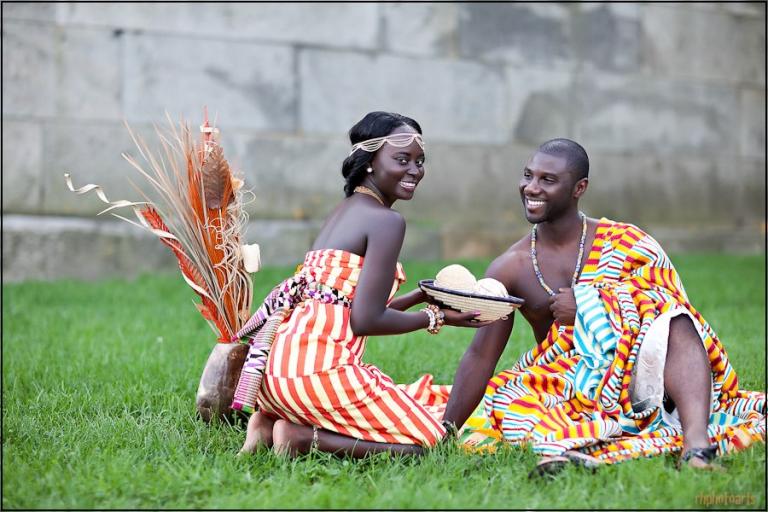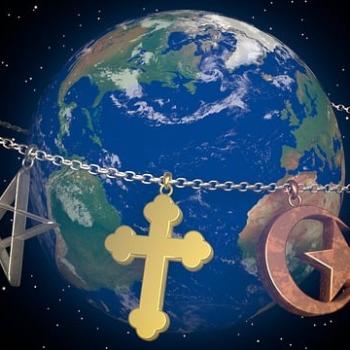All pastors would do well to subscribe to the journal Seelsorger, a publication of Doxology, the ministry to ministers. Unlike other periodicals for pastors, Seelsorger is not primarily about theology, the Bible, church growth, or leadership. Rather, it is about “the care of souls” and the “cure of souls,” the nearly forgotten art of giving spiritual–not just psychological–care to people who need it.
Seelsorger, which means “carer of souls” and is another word in German for “pastor,” is available, including back issues, here. The latest issue is about the pastoral problem of how to deal with parishioners who are just “living together” instead of getting married.
I was asked to write an article for this issue about marriage and culture. In the words of my charge, I was to address “how various societies and cultures have thought of human marriage” so as to help pastors deal with our culture’s confusions about the subject.
Recalling that topic from my university anthropology classes, I delved into the research about the role of marriage in culture; the cultural variations of marriage; what the Bible says about marriage in different cultures; and how a cultural perspective on marriage can help us makes sense of today’s issues, from same-sex weddings to “just living together.” To use the click-bait phrase, what I discovered may surprise you.
My article is not online–again, you can buy the issue here–but here are some things that I learned:
- Marriage is a “cultural universal.” All cultures from all times and places have the institution of marriage, though it takes different forms.
- No culture, except that of the contemporary West, has ever had same-sex marriage. Some cultures tolerate and even approve of homosexuality, but none of them have given those relationships the status of marriage. (The oft-cited Roman emperors Nero and Elagabalus are exceptions that prove the rule, since they were seen even in their times as paragons of depravity, and same-sex marriage was never sanctioned in Roman law or culture.) This is because. . .
- Marriage is always oriented to bearing and raising children and establishing a generational family. The basis is not just sex, nor on romantic love. Those are outlier emphases from our culture. Marriage as a cultural universal has to do with starting a family.
- Polygamy is more common culturally than monogamy. According to anthropologists’ tabulation, 80% of cultures accept some form of polygamy, having more than one spouse at the same time. This is usually one husband with multiple wives, though a few societies have one wife with multiple husbands.
- The ancient Hebrews of the Old Testament accepted polygamy, but turned to monogamy by the time of the New Testament. This is evidently due to the influence of the Greeks and Romans, who always had only one spouse and considered polygamy to be barbarous. I comment, “Sometimes the outside culture can exert a positive influence on God’s people.”
- In most cultures, parents choose whom their children marry. This is the case 69% of world cultures. The children usually have to consent to the choice, but the difficult decision of “is this the right one?” is mostly taken out of their hands. This is because marriage is all about family and the joining of families.
- All marriages require some sort of social recognition. Not only is marriage, for all of its variations, a cultural universal. Marriage itself contains cultural universals that are common to all marriages in all cultures. One of these is that marriages must be public and socially affirmed.
- Weddings are not necessary to marriage. This social recognition often is accomplished through some sort of wedding ceremony, but not always. In fact, 35% of the world’s cultures do not have weddings. The couple just moves in together. The social recognition happens in other ways.
- The ancient Israelites did not have weddings, in our sense, and God was fine with that. Yes, they had celebratory feasts that could last for days. And there was an exchange of small, symbolic gifts between the bride and the groom. But no one said, “I now pronounce you husband and wife.”
- The early and medieval church did not have weddings, in our sense, and God was fine with that. Even where the church considered marriage to be a sacrament, under canon law, all that was necessary for a valid wedding was a promise, consent, and sexual consummation. Theologians said that matrimony was the one sacrament that did not need to be performed by a priest.
- This caused big cultural problems that Luther railed against. The medieval church claimed authority over all marriages, imposing multiple restrictions, and yet its loose practices allowed “clandestine marriages” that no one knew about, dissolution of adult marriages when a younger attachment was uncovered, the adulterous pursuit of “romantic love” apart from marriage, and forbidding marriage for the clergy. Luther railed against all of this, insisting that the state regulate this earthly, though God-given vocation, rather than the church, which, at the Council of Trent began requiring weddings presided over by a priest.
- “Common law” marriages are legally binding. In Protestant countries, “common law marriage,” in which a couple simply live together but under certain conditions are considered husband and wife, were commonplace and had the force of law. This is still the case in 10 American states, with all 50 states recognizing common law marriages contracted elsewhere.
- A mechanism for dissolving marriage is also a cultural universal. Though few cultures have easy divorce like we do, every culture has a way of ending marriage. This is true even under Roman Catholicism, which can declare that a marriage with children never occurred by scrutinizing the still-loose requirement of “consent.” Since consent is necessary for the sacrament, if either member of the couple “didn’t realize what they were getting into” (as if anybody does), their marriage can be annulled.
And there is much, more more. See what I say about all of this and how I relate it to contemporary issues about marriage and to the Christian faith. You can order the issue with my article and lots of other helpful articles here.
This is how I conclude the article:
Cultures have universals, one of them being marriage, and marriage itself has universal features. Whether polygamous or monogamous, arranged or by choice, marriage is always between a man and a woman; is ordered for the conception and care of children; requires a formal recognition; is a permanent commitment, though there are provisions for divorce.
Our postmodern society today is violating all of these universals. Our marriages can be between individuals of the same sex. A large percentage of our children are not raised by married parents, and many sexual partners do all they can, to the point of abortion, to avoid having children. Cohabiting partners reject any formal recognition of their relationship. Marriage in the minds of many is not a permanent commitment, and couples living together without marriage are institutionalizing that impermanence and that lack of commitment.
What we are seeing is not a new culture but the dissolution of culture. We Christians are rightly concerned about how the decline of marriage violates morality and religion. It also violates culture.
Photo: Wedding in Ghana by Azekhoria Benjamin, CC BY-SA 4.0 <https://creativecommons.org/licenses/by-sa/4.0>, via Wikimedia Commons














